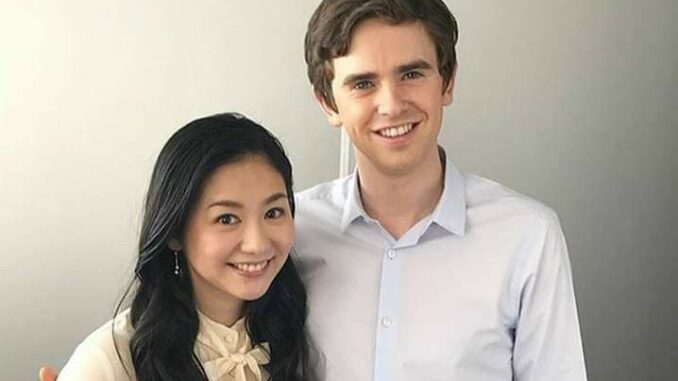
When The Good Doctor first premiered, audiences were intrigued. A young surgical resident with autism and savant syndrome, navigating the complex and emotional world of medicine? It was unlike anything on television. But few expected just how deeply Shaun Murphy — portrayed brilliantly by Freddie Highmore — would come to reshape not only the medical drama genre, but also the public’s perception of autism itself.
Shaun isn’t just a doctor who happens to be autistic. His autism isn’t a background detail — it’s central to how he sees the world, solves problems, and connects (or struggles to connect) with others. In every episode, we’re invited into his mind — and heart — to witness not only the brilliance of his medical diagnoses, but the quiet battles he fights every day.
This isn’t just representation. This is storytelling that refuses to reduce difference into stereotype. And it’s why The Good Doctor has resonated so powerfully with audiences worldwide.
A Character That Breaks the Mold
Television has long had a complicated relationship with characters on the autism spectrum. Too often, they’re reduced to one-note geniuses or portrayed through exaggerated quirks. But Shaun is different. He’s complex. He’s contradictory. He’s capable of saving a life in the operating room and still completely bewildered by a casual conversation in the hallway.
What Freddie Highmore brings to the role is nuance. Shaun isn’t overly romanticized or patronized. He’s allowed to be brilliant and frustrating. Endearing and difficult. Kind and blunt. He’s allowed to be human.
It’s that humanity — often messy and uncomfortable — that forces audiences to let go of assumptions. Shaun doesn’t just make us see autism differently. He makes us feel it.
The Emotional Weight of Being Different
One of the most powerful things The Good Doctor does is show us what it’s like to live in a world not built for you. Whether it’s misunderstanding social cues, struggling with physical touch, or being dismissed by arrogant surgeons, Shaun faces barriers most people never think about. And yet, he keeps showing up. He keeps trying. And in doing so, he teaches us something profound about resilience.
But the show doesn’t sugarcoat his journey. It explores the isolation, the miscommunication, the fear of being unaccepted. When Shaun lashes out or shuts down, the show doesn’t villainize him. It explains him. It offers context. And most importantly, it gives him space to grow.
Audiences witness his evolution — from a timid resident barely speaking up in meetings, to a confident doctor pushing back against authority when patients’ lives are on the line. That growth is earned. And it’s one of the most satisfying arcs in recent TV history.
A Show That Trusts Its Audience
What sets The Good Doctor apart is its refusal to simplify. It presents emotional, ethical, and medical dilemmas with honesty and tension. But more importantly, it trusts its viewers to sit with discomfort.
There are no easy answers when Shaun is denied a leadership role because his behavior unsettles patients. Or when his honesty costs him friendships. Or when even well-meaning colleagues fail to understand what he needs. These are hard moments — and the show lets them breathe.
Rather than wrapping each episode in a neat resolution, The Good Doctor leans into the ambiguity. It shows us that inclusion isn’t just a moral checkbox — it’s a practice. It’s messy. It takes work.
Freddie Highmore’s Transformative Performance
A huge part of the show’s success lies in Freddie Highmore’s portrayal. Known for his earlier roles in Bates Motel and Finding Neverland, Highmore disappears into Shaun with such precision that you forget you’re watching an actor at all.
Every gesture, every pause, every intonation is intentional. But what makes the performance truly groundbreaking is the emotion. Highmore doesn’t just play Shaun’s intelligence — he plays his longing. His hope. His heartbreak. It’s a performance rooted not just in research, but in empathy.
It’s no surprise that Highmore has been nominated for multiple awards, including the Golden Globe. But more than that, he’s earned the respect of autistic viewers and advocates who see Shaun not as a caricature, but as someone who feels real.
A Global Conversation Starter
Since its debut, The Good Doctor has been broadcast in over 100 countries and dubbed into more than 40 languages. That global reach has sparked important conversations about autism and neurodiversity in places where such discussions were previously rare.
In classrooms, Shaun is used as a teaching tool. In families, he becomes a point of connection between autistic children and their parents. And on social media, fans from around the world share what the show has meant to them — how it’s helped them feel seen, understood, or simply less alone.
That kind of cultural impact can’t be measured in ratings alone. It’s measured in changed minds, opened hearts, and lives made just a little more visible.
Changing the Narrative, One Episode at a Time
In a television landscape that often chases the next trend, The Good Doctor has done something radical: it slowed down. It asked us to listen. To pay attention to someone who sees the world differently — and to recognize the value in that difference. Shaun Murphy didn’t just change how we see doctors. He changed how we see humanity. And that’s why, years after its premiere, The Good Doctor continues to matter.
